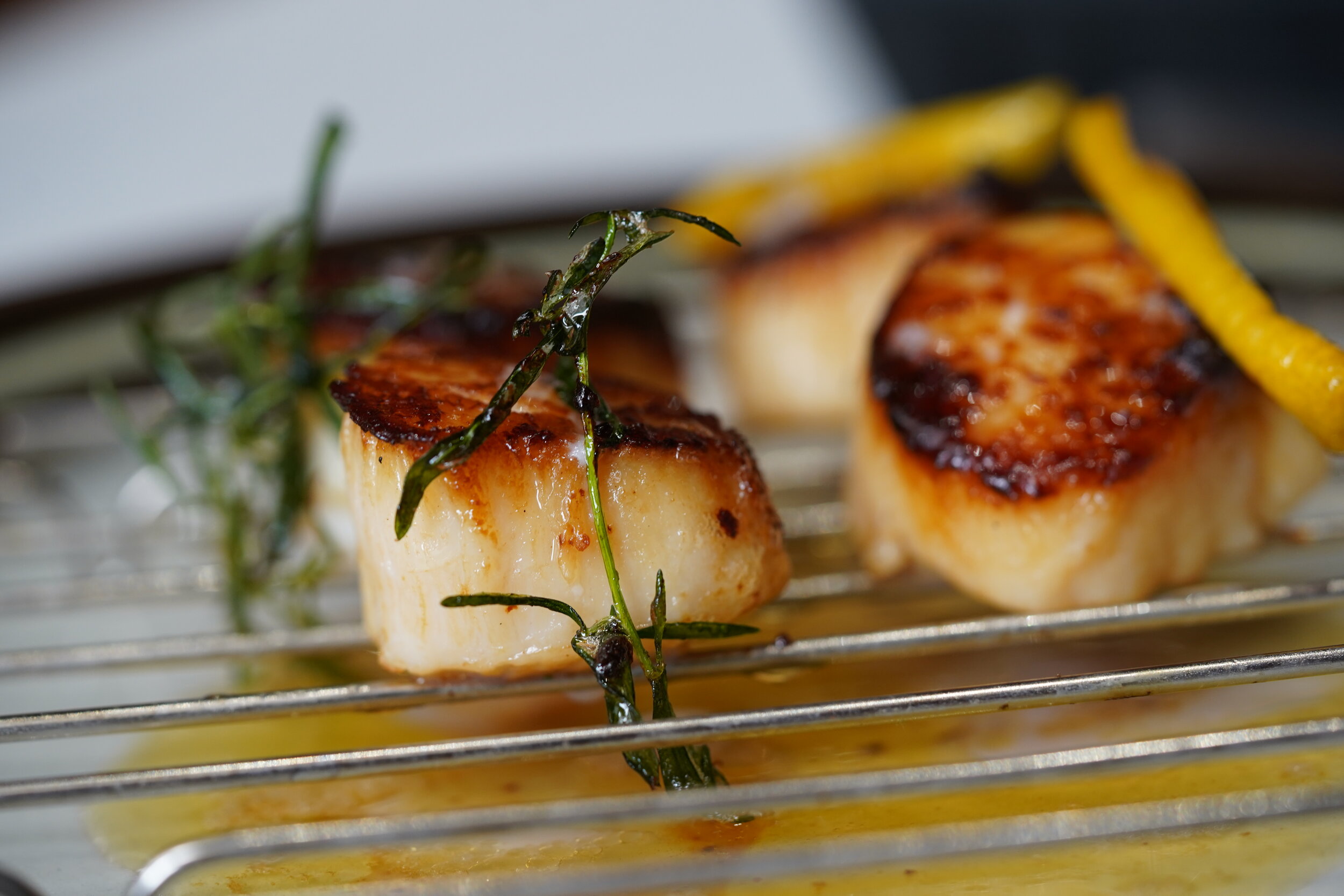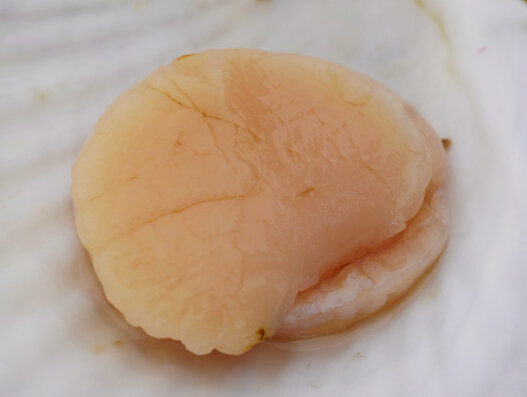Seared Scallops
Ingredients
Prep-time 25 mins.
Serves 4 people.
Scallops
Butter, cut into 1cm cubes
Aromatics: garlic clove, lemon peel, fresh herbs like tarragon, thyme or basil
Equipment
Frying pan
Tongs
spatula/flipper
Spoon for basting
Kitchen towel or oven mitt
Paper towel
Tray with cooling rack (or a plate will do)
Salt
Veg oil with high smoke point (grape seed, canola, avocado, etc)
Empty pot or tin can to discard excess hot oil
Chef’s tip: This is a tricky technique to master, but it’s impressive and delicious when you nail it. Safety always comes first with this. You need to move quickly but you should never rush - it’s not worth it. Note that patting the scallops dry is mandatory to achieve an evenly golden-brown crust.
Artwork by Adrian McKerracher
Preparation
Pat scallops dry. Place scallops on a paper towel lined tray or plate. Set aside in the fridge until ready.
Get prepped. Gather everything before you start because they cook quickly. Set the butter and aromatics next to the stove. Have your oven mitt, spoon, tongs, spatula, oil discard vessel and tray/plate next to the stove too. Don’t forget the scallops as well.
Preheat pan on medium/high. Add oil to pan until it covers entire bottom by 2-3mm (likely way more oil than you would normally use). Sprinkle salt evenly over pan and preheat on medium-high just until the first whisps of smoke form.
Season and cook. Lightly season scallops with salt and carefully place them one at a time into the hot oil (place them, don’t drop them). Don’t stir, just watch them as they turn golden brown around the edges, turn heat down if the oil is smoking or the scallops start turning black.
Once they all look golden brown around the edges, very carefully discard the excess oil into the pot or can by holding the spatula over the scallops with one hand and picking up the pan with your oven mit or kitchen towel protected other hand and tipping most of the oil out (the spatula keeps the scallops from toppling out with the oil). This step should be done slowly and carefully because hot oil is very dangerous. Place pan back on the heat and add butter cubes. They should foam up rapidly. Smash the garlic clove with the palm of your hand and place it and the other aromatics into the bubbling butter. Quickly, but carefully flip all of the scallops over and tip the back side of the pan into the air so frothing butter pools in the front of the pan. Spoon the butter and aromatics over the scallops for a few seconds and then carefully slide the entire contents of the pan out onto the resting rack or plate.
Season and enjoy! A touch of flaky salt and optional squeeze of lemon and enjoy immediately.
Extra Tips from Chef Brandon
Wet scallops will splatter in the oil and will never get crispy. Many previously frozen scallops have water mixed with tripolyphosphate added to them. This is a preservative, but it also adds weight and volume to the scallops ensuring higher profits, but diluting the flavor and making it impossible to get a good crust when cooking. Wewaikai scallops are sold fresh or “dry-packed” with no additives.
The frothing butter adds extra crispness to the crust, but the temperature needs to be just right. If you add the butter and it doesn’t froth rapidly then your pan is not hot enough (and the scallops are likely not nicely browned either). If the butter starts to burn and turn black as soon as you add it then the pan is likely too hot. Cubing the butter into even sizes ensures they melt at an even pace (whereas one large clump of butter would burn on the outside before the middle is melted). An infrared thermometer aimed at the pan would read between 375-425F when searing. At this temperature the aromatics give off intoxicating fresh aromas, but only if they are added for the last 10-15 seconds of cooking or the fresh notes turn into roasted notes and you lose all the subtle flavours.
For thick scallops (like the Wewaikai scallops) you can butter baste with the spoon a little longer to ensure it’s not raw in the middle. For medium scallops you can just flip them for 1-2 seconds and slide them out of the pan or else they will over-cook. Small scallops don’t even need to be flipped. A squeeze of lemon at the end adds nice brightness, but only if it’s added immediately before consuming or else it will make your hard earned crispy crust turn soggy.
This is just a technique, not a complete dish. Try these atop an herbaceous pasta, an aromatic curry or a light salad with crunchy and juicy vegetables. The first dish I ever had scallops like this was simple and memorable. Just steamed rice, a light and sweet coconut curry broth, fresh pineapple and cilantro.
We’re proud of all of our family, friends and the fisher-people who harvest and process seafood with Walcan Seafood and Tide to Table!
The We Wai Kai Nation cultivate and harvest scallops in their cold, fast moving waters off of Rebecca Spit Provincial Park. A video will be released shortly outlining this program!
Scallops will be seasonally available fresh or frozen. Frozen scallops are treated to the same flash freezing process used to prepare sushi grade fish; these are a premium product.






